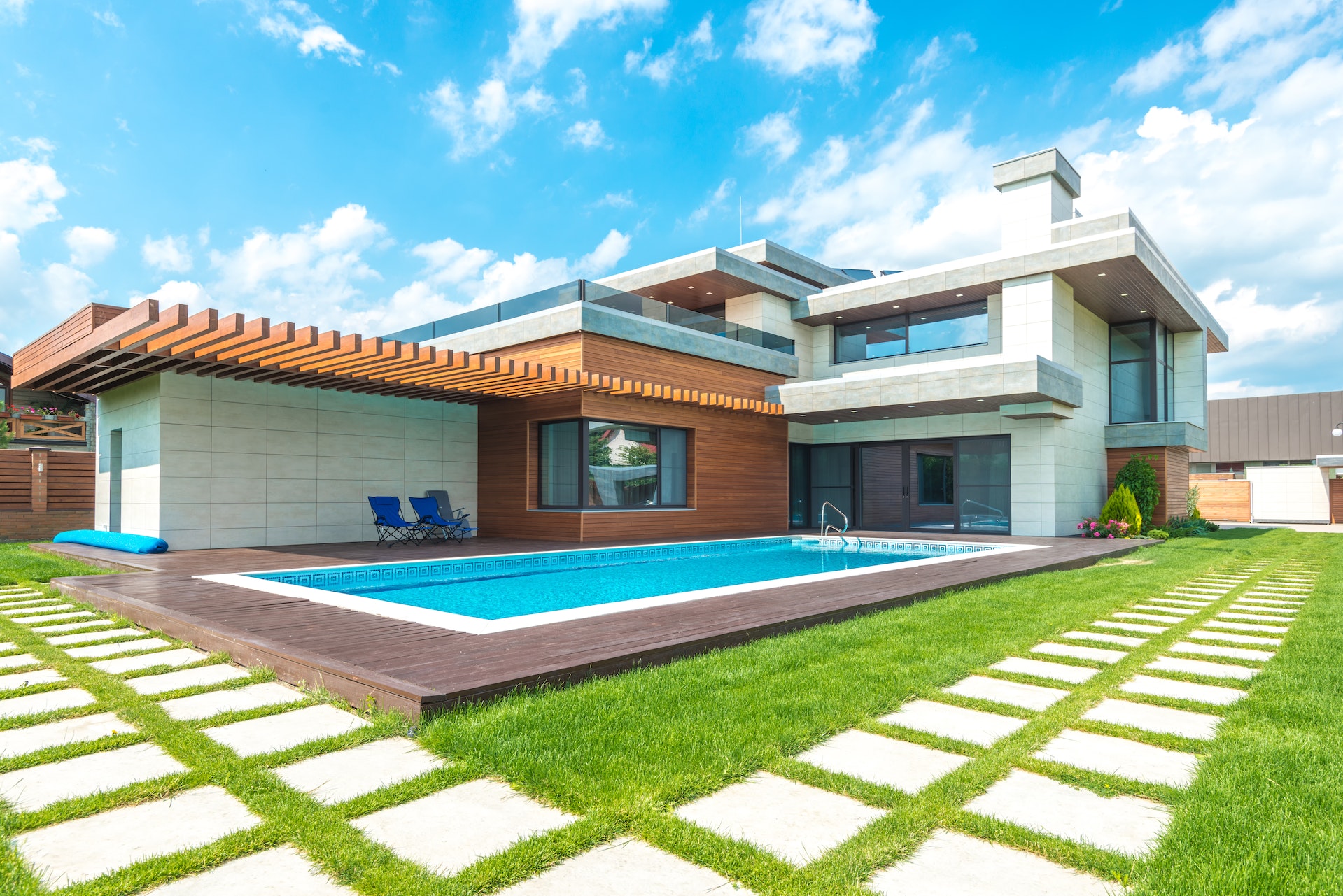
Many people associate summer with hot weather, sunshine, and being outside. What could be more relaxing and refreshing than cooling off in your own swimming pool? But before you start digging in your backyard, there are a few things to think about.
Table of Contents
How much use will it get?
A pool can be a big financial commitment. Take a moment to think about why you want the pool and how much you will use it. Maybe you want to swim every day for exercise or maybe you have a large family that enjoys playing in the water. Perhaps you see hosting lots of pool parties in your future or you simply like the idea of relaxing poolside. Only you can decide if it’s worth the investment.
Decide on what kind of pool you want
There are three main types of pools. The one you choose will depend on your budget, available space, and personal preferences. Here are their pros and cons:
In-ground pools
In-ground pools come in lots of shapes and sizes and in materials like concrete, fiberglass, or vinyl. They can be designed to blend with your landscaping, fit perfectly into your backyard, and can last for many years.
Pros:
- Customizable
- High-end look
- Last long-term
Cons:
- Most expensive option
- Longer installation time
Above-ground pools:
Steel, resin, and aluminum are the most common materials used to make above-ground pools. They can be set up quickly, and they’re a great option if you want a pool but have limited space or funds.
Pros:
- Most affordable option
- Easy to install and can be relocated
- Good for small spaces
Cons:
- Limited size and shape options
- Least appealing looking
- May not last as long as in-ground pools
Semi in-ground pools:
Semi in-ground pools are partially buried and partially above ground. They are typically made with aluminum, concrete, or fiberglass and can be customized with a range of features.
Pros:
- Less expensive than in-ground pools
- More customization options than above-ground pools
Cons:
- Limited size and shape options
- Not as durable as in-ground pools
Settle on features
Features can improve the performance of your pool or add to the beauty of your outdoor living space. Keep in mind that the more features you choose, the more your pool will cost. Popular features include:
- Lighting
- Waterfalls, fountains, and waterjets
- Heating and cooling systems
- Decks
- Safety features, such as fences and alarms
- Automation that allows you to control things like heating, lighting, and cleaning from your smartphone or tablet
Figure out the budget
The price of a pool depends on its type, size, and features, as well as where you live. When figuring out your budget, determine the cost of the pool as well as its installation. Then estimate much it will cost to clean, operate, and maintain the pool, too.
Consider financing
So, now that you know what your new pool will look like and how much it will cost, how will you pay for it? Using your savings could be the simplest way to fund your pool. However, buying with cash might not work for everyone, especially if the pool is very expensive.
Another option is to finance it using the equity in your home. Depending on how much equity you have, you may be able to get a loan or line of credit.
Life insurance can also help pay for your pool. If you have a whole life insurance policy that has built up cash value over time, you can utilize the cash value for any reason, including to make upgrades to your home. It’s worth noting, however, that using the cash value will reduce your death benefit.
Whatever you end up doing, taking the time to think through your needs will allow you to make an informed decision that can provide you with years of enjoyment.
The primary purpose of permanent life insurance is to provide a death benefit. Using permanent life insurance accumulated value will reduce the death benefit and may affect other aspects of the policy.
Source: iQuanti



